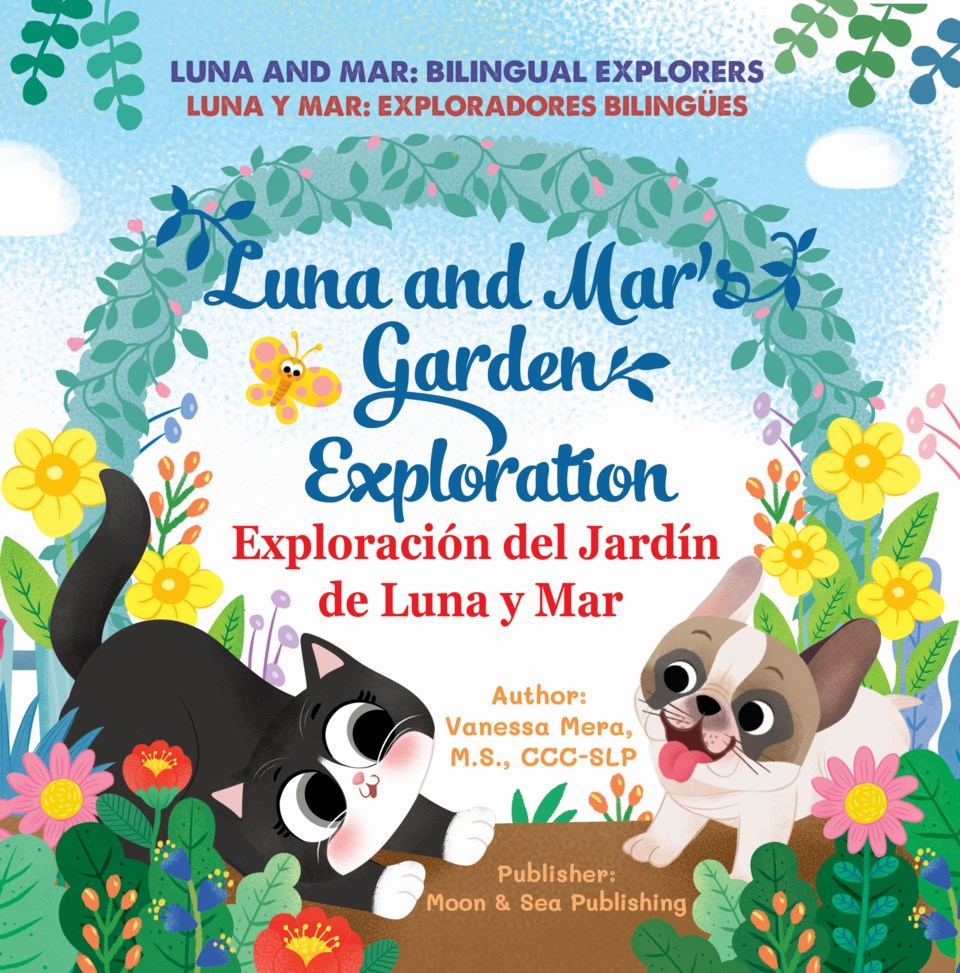The way to a child’s mind is through a book. So why not teach two languages at once, suggests Vanessa Mera Grund, author of the bilingual children’s book series Luna and Mar: Bilingual Explorers.
Grund, who is an early intervention speech pathologist, wanted to create a book that went beyond beautiful pictures and a compelling storyline. Instead, she used her skillset to teach Spanish for early readers ages 0-5 through Luna and Mar, the two main characters of the book series named after her previous cat and playful dog.
“After five-years-old, you start to lose the ability to learn a new language because your brain starts to get rid of what it doesn't need,” explained Grund, a Sunset Park resident. “It gets harder as you get older. So from zero to five, you have that sweet spot to become fluent in the languages that you're exposed to.”
The latest title, Luna and Mar’s: Playground Fun, released on Sept. 1, helps children learn Spanish words associated with the playground.

The two books in the series use simple sentences in both English and Spanish, alongside a corresponding picture. This way, children can associate the words with an image, Grund said.
Grund decided to begin her bilingual book series after noticing she only had a handful of books to use for her own students. In addition, she wanted to bring some variety to the bilingual book genre.
She sought to showcase families that resembled hers, where there is only one English-speaking guardian. This way, both child and non-Spanish-speaking guardians can learn together as they read.
“I've had a lot of other parents tell me, ‘I speak Spanish, but it's not that good, but I want to teach my kids Spanish,’” Grund explained.
By keeping the sentences simple and having the English and Spanish words side by side, parents feel more comfortable and confident teaching their kids Spanish, she added.
Growing up in a Dominican and Puerto Rican household, Grund didn't fully learn Spanish until she was an adult. She briefly spoke the language while she was young, but forgot it due to inconsistent use.
Now, she advocates for exposing children to language in their early years because that’s when their brains are most malleable.
“For a long time, I was embarrassed about my level of proficiency in Spanish,” admitted Grund.
“I've learned from a lot of my other peers that also come from Spanish speaking homes, that they also feel this way. And I've had to work very diligently and be very intentional about becoming more proficient in Spanish. It's gotten so much better, and there are still times where I hear myself making a mistake,” she said.
In addition to adding bilingual books to your library, Grund suggests building a child's vocabulary bank by labeling items in your home, having bilingual music time, or speaking to them in the language you want them to learn, she said.
“Whatever level of fluency or proficiency you have, don't be embarrassed, don't be afraid to introduce this language to your children," she said. "If you feel that that's going to be important to your cultural connection, you both can learn together at the same time.”
For more information about the Luna and Mar: Bilingual Explorers book series, click here.





